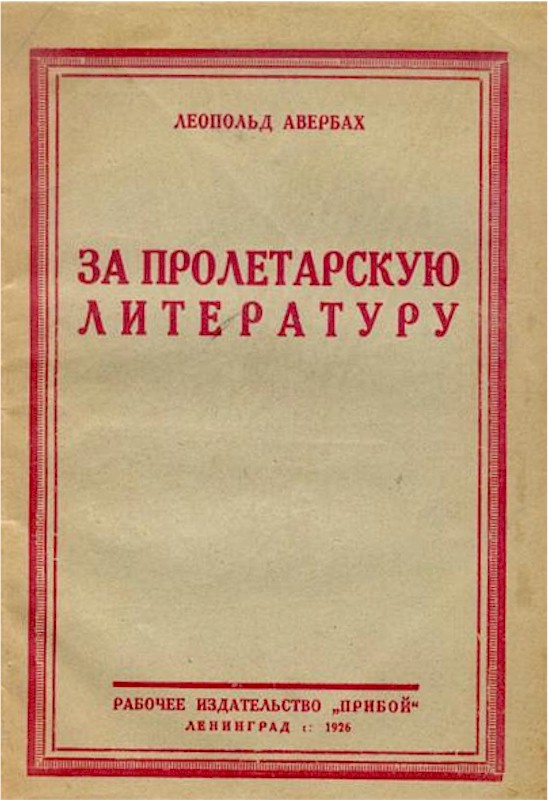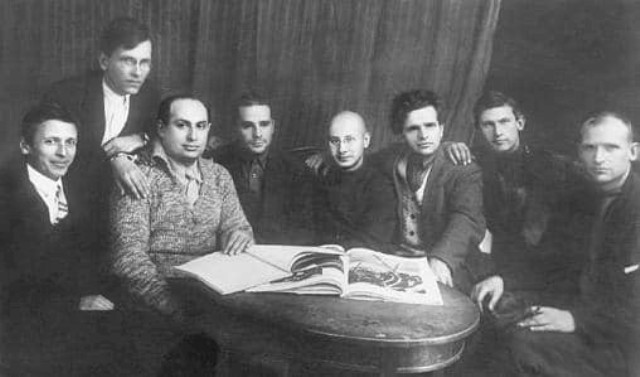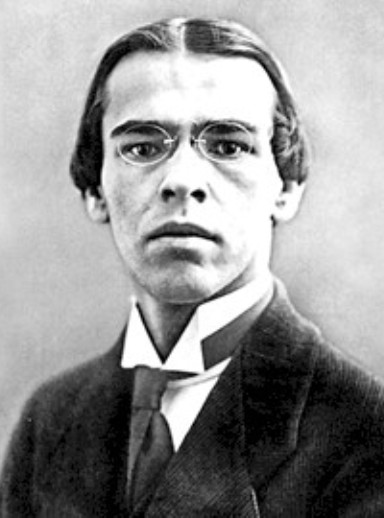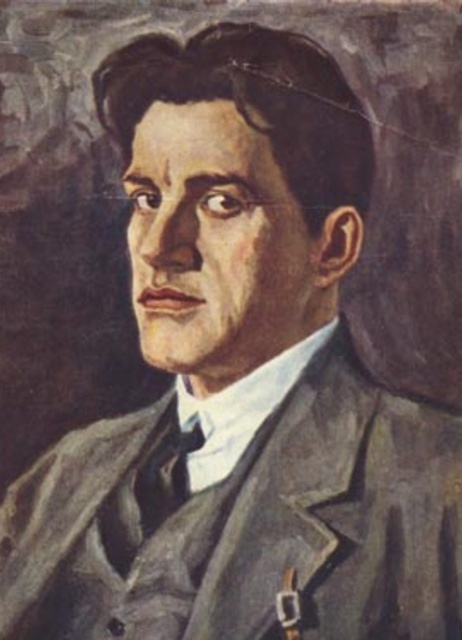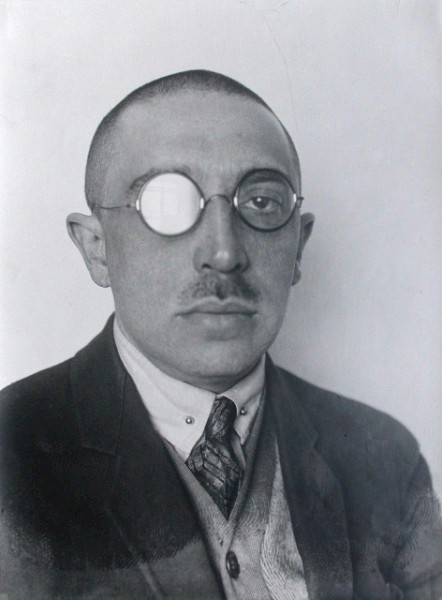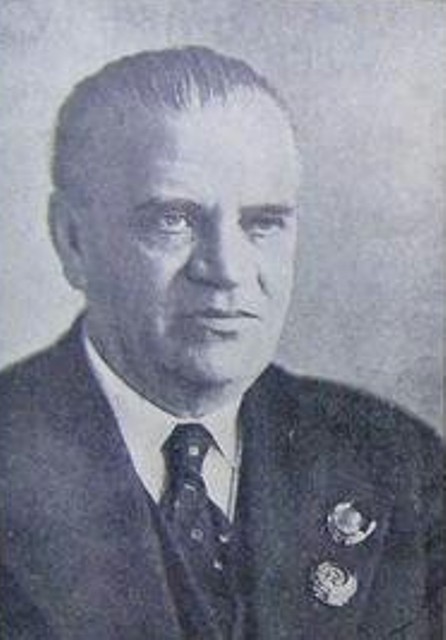13. The hero enters (continued)
English > The novel > Annotations per chapter > Chapter 13 (continued)
Varenka Manechka… striped dress
The master hardly remembers the name of the woman with whom he lived before he met Margarita. I don’t know if Bulgakov had a real prototype in mind for Varenka or Manechka «with the striped dress». Both Varenka and Manechka are Russian nicknames, the first is for Barbara, the other for Maria.
This fragment reminds of a scene in The Return, a novel written by Andrei Bely (1880-1934), pseudonym of Boris Nikolayevich Bugayev, in which the hero, Yevgeny Handrikov, after a sojourn in a psychiatric hospital, doesn't remember the name of his wife, just the colour of her dress.
Secret wife
The master's affair with Margarita mimics that of Bulgakov with Elena Sergeevna Shilovskaya (1893-1970), born Nyurenberg, who left her well-positioned military husband for the relatively less-well-off writer. At first their affair was difficult because both were married, but Elena Sergeevna eventually became Bulgakov's wife. The character of Margarita only appeared in the novel after Bulgakov met Shilovskaya.
He would never tell her name to anyone
We will learn the name of the master's lover in Book Two, but it will not be the master who reveals it.
The bureau and books from the painted floor to the sooty ceiling
In Chapter 13 the master recalls the «writing desk... and the books, books that went from the painted floor to the soot-covered ceiling». This description matches perfectly Bulgakov’s own study room.
A novel on such a strange theme
The policy toward literature adopted by the Communist party in 1928 is characterized by the term Социальный заказ [sotsialnyi zakaz] or the «social command». It was in connection with the first five-year plan and carried out by the Российская Ассоциация Пролетарских Писателей (РАПП) [Rossyskaya assotsiatsiya Proletarskikh Pisateley] (RAPP) or the Russian Association of Proletarian Writers, and the editorial boards of publishing houses. Under this policy, specific themes were dictated to writers individually with the goal of stimulating «socialist construction». The theme assigned to Bezdomny, while not directly connected with the five-year plan, is meant to further the ideological ends of the state related to religion. Although the Soviet Union was an official atheistic state, the RAPP leaders made it clear that they supported such historical themes, if treated from the «proper» Marxist point of view.
Bulgakov is specifically ridiculing the social command in the novel when his hero, the master, recalls that the editor to whom he submitted his manuscript asked him, what in his opinion was a totally idiotic question: «who had given him the idea to write a novel on such a strange theme?» A book about Pilate was clearly not foreseen in the master's social command.
There are parallels between Bulgakov's life and the life of the master. Bulgakov's first novel, The White Guard, was only partially published in a journal in 1925, but he read it to various literary groups, whose general reaction was that one could never get a work on such a subject published. The real attacks, however, came in 1926 when Bulgakov turned the novel into a hit play for the Moscow Art Theater MKhAT under the name Days of the Turbins. Nothing could have been stranger than Bulgakov's subject, which was about the fate of a pro-monarchist family in Kyiv during the Civil War. The attacks described in this chapter of The Master and Margarita are clearly distillations of the ones various critics made on Bulgakov's plays.
Ariman
Bulgakov has given the name of the Persian evil spirit Ariman to the real critic Leopold Leonidovich Averbach (1903-1939), secretary of the writers’ union, the Российская Ассоциация Пролетарских Писателей (РАПП) [Rossyskaya assotsiatsiya Proletarskikh Pisateley] (RAPP) or the Russian Association of Proletarian Writers. Averbach was one of Bulgakov’s fiercest opponents, in 1926 he wrote За пролетарскую литературу [Za proletarskuyu lieratury] or About the Proletarian Literature, in which he called Bulgakov «the most prominent representative of the right wing».
Red petals strewn across the tide page
With these words, Bulgakov refers to a fact of his private life, which was told by Elena Sergeevna Shilovskaya (1893-1970) to Bulgakov specialist Marietta Omarovna Chudakova (°1937) in October 1968: «In the summer of 1929, I went to Yessentuki for a treatment. Bulgakov wrote me a nice letter, strewn with petals of red roses. But I could not keep those letters. In one of his letters he wrote: «I have prepared a worthy gift for you». When I was back in Moscow, he gave me the text of the autobiographical novella To a secret friend».
Slanting rain
The image of the slanting rain comes from the poem Back home! by Vladimir Vladimirovich Mayakovsky (1893-1930). Bulgakov must have known it from its magazine publication in 1926. When the poet compiled it later, he deleted, on the advise of his friend Osip Maksimovich Brik (1888-1945), the last lines, probably the best of the poem. They read as follows:
I want understanding of my country, nothing more.
And what
if understanding fails to come?
Then I pass in vain
its territory
just like rain
passes over slantingly
It looks like Bulgakov identifies himself with these verses through the master.
Pilatism
Bulgakov's archives contain excerpts from the newspaper Rabochaya Moskva, in which an article was published with the title Ударим по булгаковщине! [Udarim po bulgakovshchine] or We will strike and fight against Bulgakovism! In The Master and Margarita, Lavrovich writes an article in which he recommends to Ударить по пилатчине [udarit' po pilatchine] or «striking, and striking hard, at Pilatism». Bulgakov was, like the master, attacked by the press. In his letter to the Soviet authorities in 1930 he knew exactly how often. In ten years of authorship, he had read 301 articles on him in the soviet press, «among which: laudatory - 3, hostile-abusive - 298» His theatre plays were almost all banned.
The initials «N.E.»
In the French and English translations of The Master and Margarita the initials «N.E.» are mentioned, but in the Dutch translation we read about the initials «M.Z.». In the Russian editions we find both the initials «N.E.» and the initials «M.Z.». In some Russian editions is written подписанная буквами «Н.Э.» or signed with the initials «N.E.», but in many other versions of the novel we read подписанная буквами «М.З.» or signed with the initials «M.Z.». I don't know (yet) who is «N.E.», but the real prototype for «M.Z.» is Mikhail Borisovich Zagorsky (1885-1951), a writer and critic who wrote very bitter articles on Bulgakov's theatre plays Crimson Island and The Days of the Turbins.
In an earlier version of the novel Bulgakov had given a name to this character corresponding to the initials «M.Z.». He was called З. Мышьяк [Z. Mishyak], which means Z. Arsenic.
A militant Old Believer
The староверы [starovyery] or старообрядцы [staroobryadtsy] or Old Believers separated from the Russian Orthdox church in the 17th century as a protest against church reforms introduced by Patriarch Nikon of Moscow, born as Nikita Minin (1605-1681). Latunsky uses this term somewhat vainly. On October 5, 1926, Bulgakov was called, in a similar way, a militant white guard by Alexander Robertovich Orlinski (1892-1938) in Nasha Gazeta. Bulgakov's theatre play Days of the Turbins was qualified as a «political demonstration in which the author winks to the rubbish of the White Guard».
Joyless autumn days set in
The time of year is meaningful to Russian readers who have know the Soviet era, since autumn and spring were times of increased arrests, as the government tried to distract the populace from the regime's economic and cultural failures.
Aloisy Mogarych
It may surprise the reader why I mention the character Aloisy Mogarych on this page. In the English translations of Michael Glenny and Richard Pevear and Larissa Volokhonsky - and in many others - Mogarych only appears in chapter 24, when Woland calls him to account for what he had done to the master. But in the original Russian text, Aloisy Mogarych appears already at the end of Chapter 13. The master tells Ivan how Mogarych showed up in the his garden, introduced himself as a journalist, and proved to know amazingly much about the working methods and the criteria used by the authorities to ban manuscripts. The master even tells Ivan that they became friends.
Bulgakov had based the Aloisy Mogarych character on the dramaturge Sergey Aleksandrovich Yermolinsky (1900-1984), who came to live in Mansurovsky pereulok No. 9 in 1929. That was the place where Bulgakov situated the master's basement. Lyubov Yevgenev Belozerskaya (1895-1987), Bulgakov's second wife, was especially suspicious of Yermolinsky. His third wife Elena Sergeevna Shilovskaya (1893-1970) also had doubts about Yermolinsky, but on March 5, 1940, Bulgakov had a conversation with Elena Sergeevna about Yermolinsky, and whether he could be a traitor. Bulgakov finally concluded: «Нет, не предал!» or «No, he did not betray me». The passage about the new friend from chapter 13 was crossed out in red that day, but Woland's punishment of Mogarych in chapter 24 was not deleted. Five days later, the author passed away, and we will never know if he had planned on making further changes to the Mogarych character.
So, this scene is one of the so-called loose ends of The Master and Margarita. Since Bulgakov died before he could finish the authorial text, the novel has got some imperfections. The frequent rewritings, shortenings and extensions of the novel caused some loose ends and even some contradictions in the text.
Click here to read the loose end
Click here to read more about Aloisy Mogarych
Click here to see the meeting of the Master and Mogarych
And started burning them
Bulgakov himself burned a number of his manuscripts, including an early version of The Master and Margarita, in 1930, when he was effectively banned from the theaters.
There came a knock at my window...
Only Ivan can hear what follows. But to the Russian reader who has known the Soviet era, it is clear that the master is arrested. When he returns to his basement later, it becomes clear that someone else lives there now: «a gramophone was playing in my rooms». The reason is exposed in Book Two when Alois Mogarych is called to account at Woland’s.
Mid-January…
From the first chapter we know that Ivan was taken to the hospital «on a dreadful May evening». With the detail of «mid-january» we now know that the master spent some four months in «another institution».
...in the same coat but with the buttons torn off
This laconic reference is the only indication of where the master spent those lost four months. It was customary to remove belts, shoelaces and buttons from the apparel of those «held for questioning» in the Soviet Union.
Fear possessed every cell of my body
Many of the details of the master's anxiety are autobiographical. In the mid 1930's Bulgakov suffered from agoraphobia and was treated by various methods.
Previous page Annotations chapter 13
Share this page |
Chapters
- Introduction
- 1 Never Talk with Strangers
- 2 Pontius Pilate
- 3 The Seventh Proof
- 4 The Chase
- 5 There were Doings at Griboedov's
- 6 Schizophrenia, as was Said
- 7 A Naughty Apartment
- 8 The Combat between the Professor...
- 9 Koroviev's Stunts
- 10 News From Yalta
- 11 Ivan Splits in Two
- 12 Black Magic and Its Exposure
- 13 The Hero Enters
- 14 Glory to the Cock!
- 15 Nikanor Ivanovich's Dream
- 16 The Execution
- 17 An Unquiet Day
- 18 Hapless Visitors
- 19 Margarita
- 20 Azazello's Cream
- 21 Flight
- 22 By Candlelight
- 23 The Great Ball at Satan's
- 24 The Extraction of the Master
- 25 How the Procurator Tried...
- 26 The Burial
- 27 The End of Apartment No. 50
- 28 The Last Adventures of Koroviev...
- 29 The Fate of the Master and...
- 30 It's Time! It's Time!
- 31 On Sparrow Hills
- 32 Forgiveness and Eternal Refuge
- Epilogue
English subtitles

All films based on The Master and Margarita are subtitled in English, French, German, Dutch, Spanish and Italian.
